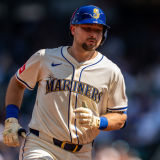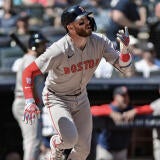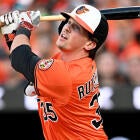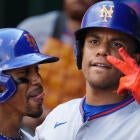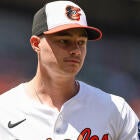
What's wrong with Kyle Tucker? Cubs star hearing boos at Wrigley Field during worst slump of his career
The star free agent-to-be has one home run in his last 38 games
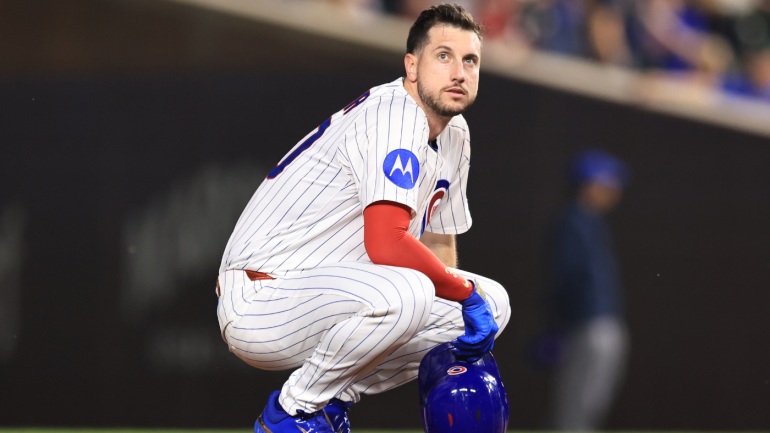
Objectively, Chicago Cubs outfielder Kyle Tucker is having a great season. He'll take a .263/.376/.451 (141 OPS+) batting line with more walks (79) than strikeouts (77) into Monday's doubleheader with the Milwaukee Brewers. Tucker has 18 homers and gone 25 for 27 stealing bases, and he again rates as an above-average defender. At 4.0 WAR, he's a top-20 position player in the sport.
And, objectively, Tucker has flat out stunk the last few weeks.
Sunday's 0 for 3 against the Pittsburgh Pirates (CHC 4, PIT 3) dropped Tucker to .195/.333/.242 in 37 games since July 1. He's hit one home run in his last 38 games and his current 23-game homer-less streak is his longest since becoming a full-time player in 2020. Tucker grounded out in the sixth inning Sunday and heard boos from the Wrigley Field crowd:
Kyle Tucker was just boo’d after he grounded out to first and didn’t run to first base. pic.twitter.com/4jVhi9z5yK
— Cubs Zone (@CubsZone) August 17, 2025
"Normally I don't show much emotion out there or anything. I just try and do my job," Tucker said this past weekend. "It's been tough the last two months or so. Just gotta keep going out there, keep taking my at-bats and everything. Try to do the most with them."
One of the game's most subtle stars the last few years, Tucker was hitting .291/.395/.537 at the end of June and was every bit the all-around impact player he was all those years for the Houston Astros. The Cubs paid a hefty price to get him, including All-Star third baseman Isaac Paredes and touted rookie outfielder Cam Smith, and Tucker was well worth the price early on.
This is no longer a little two or three-week rut though. Slumps happen, they're part of the game, but this is now close to two months of Tucker being one of the least productive hitters in the sport. That .242 slugging percentage since July 1 ranks 170th out of 171 qualified hitters. That almost seems impossible. How could a hitter this good be this bad for this long?
Here's what you need to know about Tucker and his ongoing slump, and what it could mean for his future.
He had an injury
On June 1, Tucker jammed his right ring finger sliding into second base on a first-inning stolen base. He exited the game in the fifth inning and was sent for tests on the finger, which showed no structural damage. June 2 was a team off-day, and Tucker also sat out the June 3 game to let the swelling subside. He returned to the lineup June 4.
"You get beat up playing sports," Tucker after leaving the game with the finger injury (via MLB.com). "It's just part of it. Hopefully I can get back in there for the next game."
A finger injury, especially on a player's lead hand, could certainly explain a dip in performance. If you can't grip the bat properly, how are you supposed to hit the ball properly? The trouble with the finger injury excuse is June was Tucker's most productive month this season. He had a .982 OPS in June. It was .935 in April and .882 in May, and is .575 in July and August.
If the finger injury bothered Tucker, it did not show up in his performance. He jammed his finger on June 1, was back in the lineup three days later, and had has his best month of the season. It is possible the injury lingered and Tucker made it worse by playing through it though, or that he developed bat habits compensating for it.
Tucker told reporters, including MLB.com, he was fine and "I've got to go out and do my job regardless of how I feel" when asked about his finger on Aug. 6, a statement that is at least a little curious. Cubs president of baseball operations Jed Hoyer was more forthright and acknowledged the injury gave Tucker some trouble even after he returned to the field.
"I know it did bother him for a while," Hoyer told MLB.com. "I don't know whether it still bothers him, whether it created some bad habits along the way with compensating and things like that. There's no question that when you look at his numbers, it's had an impact on him, for sure. That's the nature sometimes of these small injuries. They can do that."
When a player this talented slumps this much for this long, my first thought is he has to be playing hurt. There is a difference between being hurt and being injured, but both can impact performance. In Tucker's case, we know he had a finger injury, and just because it doesn't coincide perfectly with the start of his slump doesn't mean it hasn't contributed to it.
His swing is out of whack
Regardless of whether he's hurt or this is just a slump, Tucker's swing is not where it was earlier this year. He is rolling over on a ton of ground balls lately (50.0% ground ball rate and 56.8% pull rate in August) and his hard-hit ability has gone in the tank. Struggling player is no longer making the kind of contact that produces positive results. News at 11.
Statcast's new bat-tracking path metrics allow us to look a bit deeper into Tucker's slump. Here are the month-by-month numbers:
| Bat speed | Fast swing % | Ideal attack angle % | Barrel % | |
|---|---|---|---|---|
April | 72.0 mph | 25.8% | 48.9% | 15.2% |
May | 72.3 mph | 24.4% | 52.3% | 10.2% |
June | 72.4 mph | 23.2% | 50.6% | 15.7% |
July | 71.9 mph | 25.7% | 47.4% | 4.4% |
August | 71.0 mph | 16.9% | 42.7% | 2.8% |
MLB average | 71.8 mph | 23.0% | 51.2% | 7.1% |
Fast swing rate is the percent of swings with 75 mph bat speed. Attack angle is the angle the barrel is traveling at the moment of contact, and ideal attack angle rate is the percent of swings in the 5-20 degree range. That 5-20 degree range produces line drives. Barrel rate is the rate of the batted balls with the best combination of exit velocity and launch angle, basically.
Tucker's swing, particularly in August, has just fallen apart. His bat speed and ideal attack angle rate are way down, which in turn has led to poor contact. A 2.8% barrel rate is bottom of the barrel, no pun intended. This is not a bad-luck slump. Tucker is getting poor results because he's making poor contact. He's hitting the ball weakly and making contact at unproductive angles.
"I haven't really driven the ball great in the air and I was just trying to get that feeling back, and trying to do it out on the field, where you have the visual of what it's going to be like in the game, and trying to replicate that once the game starts," Tucker told Marquee Sports about changing his batting practice routine this past weekend. "I had a good few swings out in Toronto (last week) that just didn't really end up as a hit or anything, but it's how baseball goes sometimes. You try to battle through it."
We know Tucker's swing is not where it was earlier this season. The why is more difficult to answer. Is it the finger injury? Is it just a mechanical rut? Is the pressure of a contract year getting to him? I find that last bit hard to believe. Tucker has played in the World Series and played at such a high level that I doubt the pressure is getting to him, though I suppose we can't rule it out.
This is not the first time Tucker has had an extended slump. Granted, this is the deepest slump of his career, but Tucker had a 30-game stretch in 2023 where he slugged .349 with a .661 OPS. In 2022, he slugged .351 with a .622 OPS for 30 games. In 2021, there was a 30-game skid with a .349 slugging percentage and a .599 OPS. Great players had down months. That's baseball.
Tucker's current slump is longer than those 2021, 2022, and 2023 slumps, but he's had poor months before, and he pulled out of those. As long as he's healthy, and Tucker insists he is, he can pull himself out of this slump too. The Cubs have a comfortable enough lead on a wild card spot that Tucker has time to figure things out. It is getting to be time to do it though. This has gone on long enough, you know?
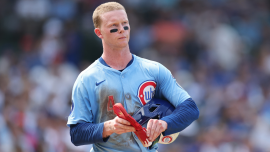
Is he costing himself money?
Tucker will be the top free agent available this offseason because he turns only 29 in January, he's an all-around impact player, and his track record is excellent. He won't get Juan Soto money because he will be three years older than Soto is now in the first year of his free-agent contract, but odds are his contract will exceed $300 million. It might stretch into the $400 million range.
How much is this slump costing him? Right now I would say not much at all. With a player as talented as Tucker, the next hot streak could always be an at-bat away. The rest of August and September (and October) could look like his April through June, and we'll forget all about this slump come the offseason. (Remember, it only takes one desperate team to blow every other offer away.)
Now, if this slump continues to linger, then yeah, it will impact Tucker's free agency, especially if his swing metrics and contact quality remain as poor as they are right now. Interested clubs will take a long, hard look into Tucker before handing out a huge money long-term deal if he's a replacement level hitter the final three months of 2025. How could they not?
Tucker's free agency is a topic for another time. The more immediate concern for the Cubs is getting Tucker right for these final few weeks of the season and the postseason. I'm not sure even an MVP-caliber performance from Tucker these last few weeks could have held off the Brewers in the NL Central, but for the Cubs to make any noise in October, Tucker has to be great. This current version isn't nearly good enough to carry Chicago on a deep postseason run.
"He has very high expectations of himself, and when he doesn't meet them, he's frustrated," Cubs manager Craig Counsell said about Tucker last week. "It's nothing physical. I'm super confident that he's going to get it back going and he's going to have a great last 50 games."



